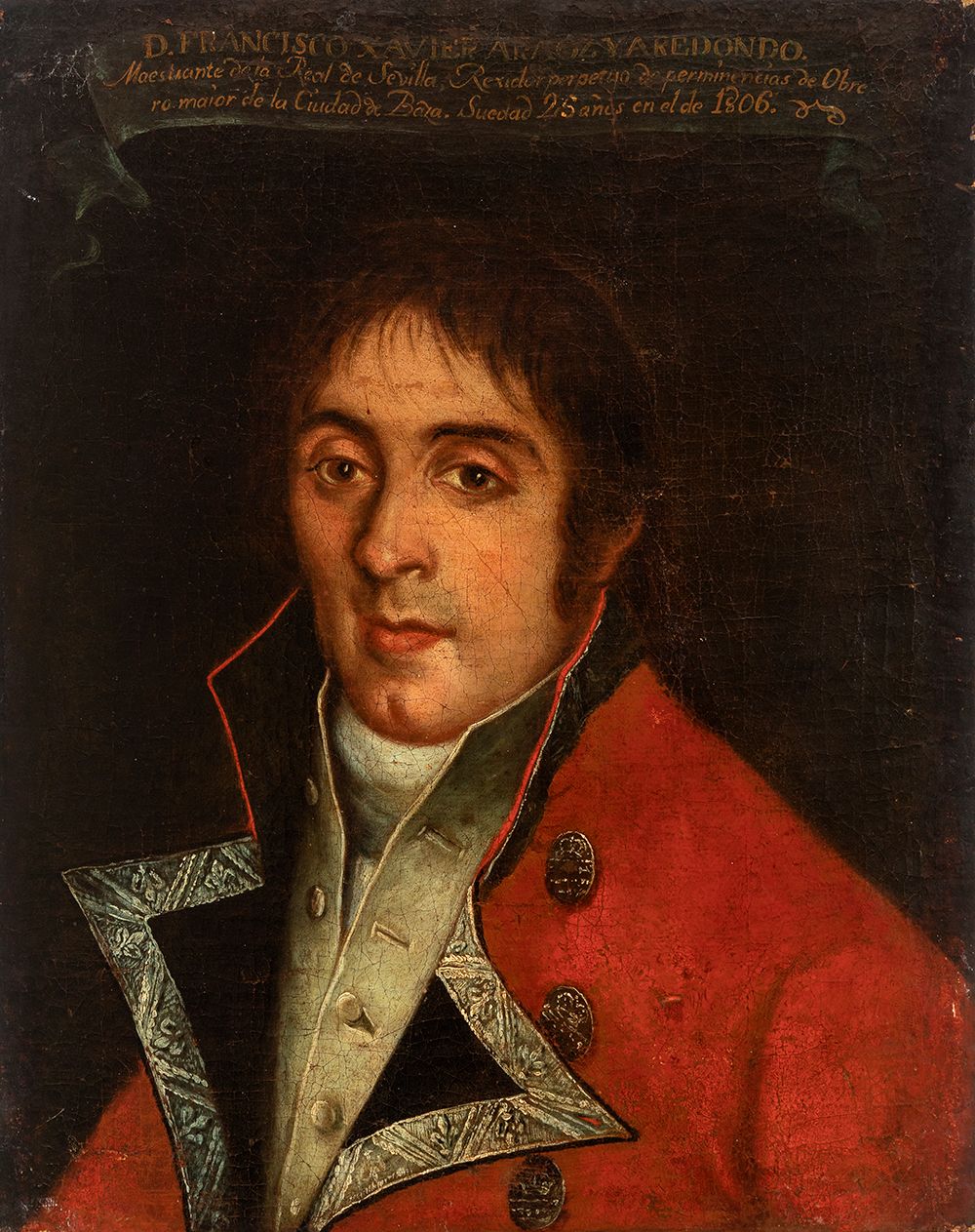Description
Andalusian school; circa 1800.
Andalusian school; circa 1800. "Portrait of Don Francisco Javier Araoz y Aredondo", 1806. Oil on canvas. Relined in the 19th century. Measurements: 33 x 22 cm. Portrait of Don Francisco Javier Araoz y Aredondo, made at the age of 25 years old as it is well indicated in the upper part of the work. Inscribed in a border, we can also appreciate the positions of the portrayed person: Maestrante de la Real de Sevilla, and regidor de perminencias de obrero mayor en la ciudad de Baza. These positions indicate the nobility of the sitter, who is depicted bust-length and slightly turned three-quarters of the way round, and is shown to the viewer in his working costume. As in the rest of Europe, portraiture became the genre that gained most prominence due to the excellence of Spanish painting as a result of the new social structures that were established in the Western world during this century, embodying the ultimate expression of the transformation in the taste and mentality of the new clientele that emerged among the nobility and the wealthy gentry, who were to take the reins of history in this period. While official circles gave precedence to other artistic genres, such as history painting, and the incipient collectors encouraged the profusion of genre paintings, portraiture was in great demand for paintings intended for the more private sphere, as a reflection of the value of the individual in the new society. This genre embodies the permanent presence of the image of its protagonists, to be enjoyed in the privacy of a studio, in the everyday warmth of a family cabinet or presiding over the main rooms of the house.
You may also like
